Riding the Hurricane: A Guide to Staying Safe
What is a hurricane?
A hurricane (tropical cyclone) is a strong storm system with high-speed winds that forms over warm waters (80° F+) in the ocean. To become a hurricane it has to have a stable wind speed of 74 mph, heavy rainfall and low-pressure systems.
Basic structure of a hurricane:
- The eye is the calm and clear center of the hurricane
- The eyewall is where the strongest winds and heaviest rainfall occurs.
- The rainbands are on the outer edge and is how the storm gets its size
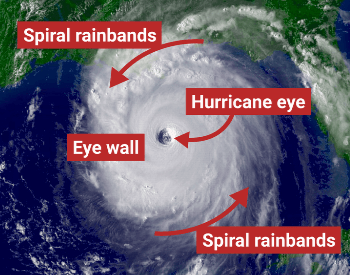
Hurricane Season
In the Northern Hemisphere, hurricane season runs from June through November. Peak months for hurricane activity are from August through October.
Did You Know! Hurricanes go by many names depending on location.
North America and the Caribbean = Hurricanes
Indian Ocean = Cyclones
Southeast Asia = Typhoons
What’s in a Name?
Scientists chose hurricane names from 6 rotating lists by the World Meteorological Organization (WMO). This list has 21 varying names (male and female). Below is the 2023 hurricane name list:
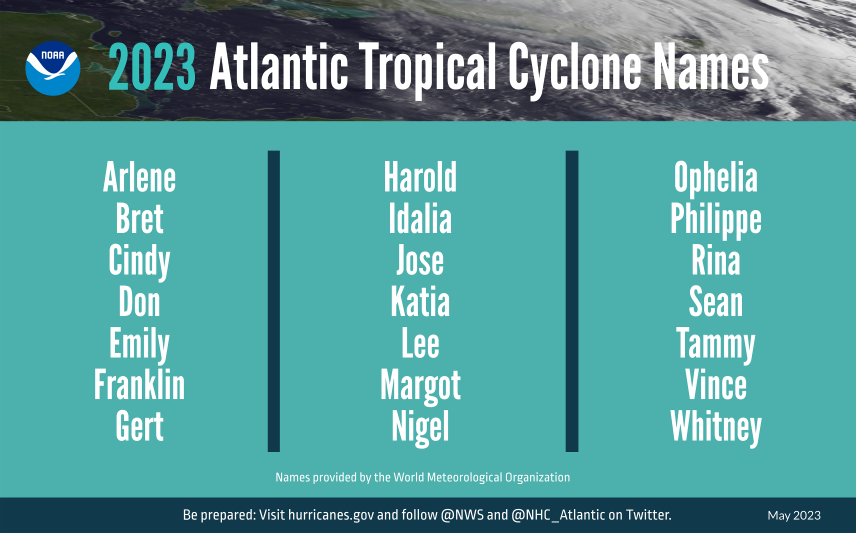
However, the letters Q, U, X, Y, and Z are not used, due to the lack of names starting with the letters. Meteorologist name storms to track and identify the different hurricanes. If a storm causes significant damage, then WMO will no longer use the names, for example, Katrina (05’), Andrew (92’) and David (79’).
Mighty Hurricane
Hurricanes are slow moving storms at ~10 -20 mph. They are the strongest in the open ocean and the weakest as they cross land. A hurricane’s strength is based on its sustained wind speeds. Scientists use the Saffir-Simpson Scale (pictured below) to rate hurricane strength – Category 1 (weakest) to Category 5 (strongest).
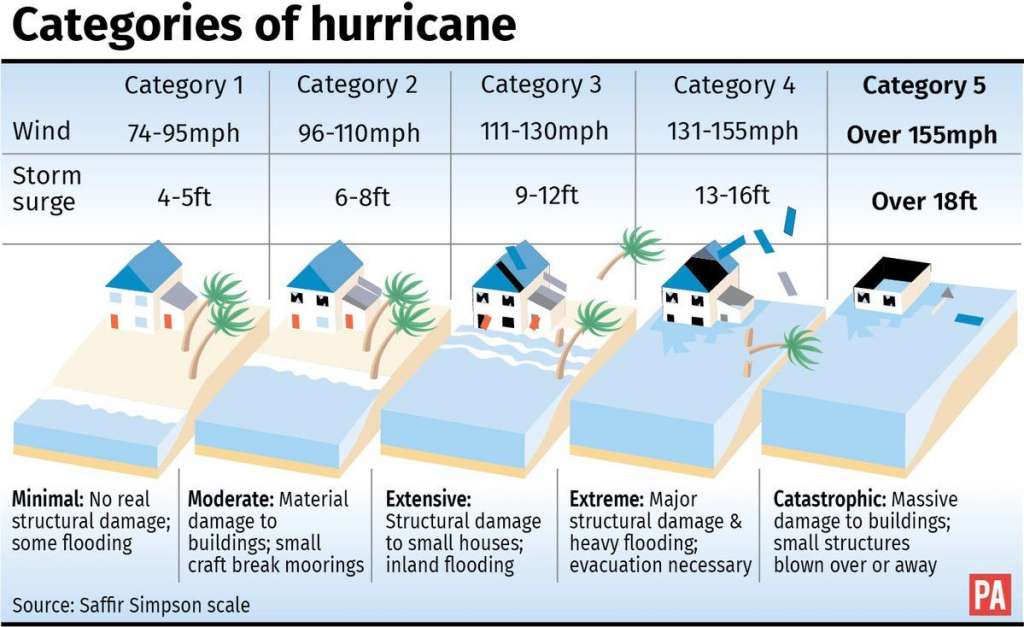
The Saffir-Simpson Hurricane Wind Scale – According to NOAA
How do we protect ourselves from hurricanes?
Before the Hurricane
- Stay Informed
- It is important to know how hurricanes can cause damage. First, conduct research and understand the hurricane’s strength and direction. Secondly, know the levels of impact provided by the Saffir-Simpson Scale
- Do you live in an evacuation zone, a mobile home, or flood zone? If you answered Yes, then it is wise to evacuate the area for you and your family’s safety.
- Pay attention to weather reports and warnings from trusted professional, i.e. meteorologist, mayors, police and fire departments
Here is the FEMA Flood Map Service Center. This is a great tool for your parents to research, if their home is in a flood zone and they need to evacuate.

- Planning
- Your family should have an emergency plan for any natural disaster.
- You should have a list of emergency contacts, a meet-up location, and a plan for your animals (are they going with you or to a shelter).
- If you are evacuating and bringing your pets, make sure you go to a shelter that allows animals. Contact the shelter beforehand to get permission to bring your pets! Since space is limited and it is important to have confirmation.
Practice, Practice, Practice! It never hurts to practice your plan. This allows you and your family to see what works and doesn’t. It gives you time to change it to best fit you and your family’s needs.
- Create an Emergency Kit
- Emergency kits are important and very easy to create. You can buy pre-made emergency kits from several organizations and companies.
- However, if you decide to make your own here are some items you will need:
- Blanket
- Clothes
- Non-perishable food items and water (pet food, if needed)
- Toiletries
- Money
- First Aid Kit
- Batteries
- Medicine
- Comfort Items
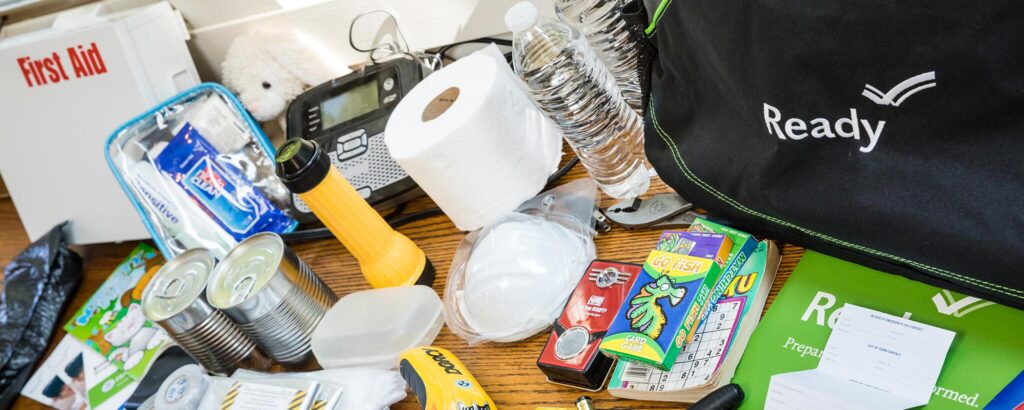
Here is a printable emergency kit by ready.gov
During the Hurricane
NEED TO KNOW: When a hurricane watch is issued, you have about 48 hours until hurricane level winds begin. When a hurricane warning has been issued, you have about 36 hours until hurricane level winds begin.
If you are staying and NOT evacuating:
- DO NOT go outside to get a better look at the hurricane. You are putting your safety and others at risk.
- Stay away from windows, glass and doors. Put as many walls between you and the outdoors as possible.
- If you are sheltering with other people, stay together and follow the adults (or leader) instructions.
- Have your emergency kit and contact list handy.
If you ARE evacuating:
- Grab your emergency kit
- Fill up your vehicle
- Plan your route and leave early enough to avoid traffic.
- Communicate with friends and family, to let them know where you will be located.
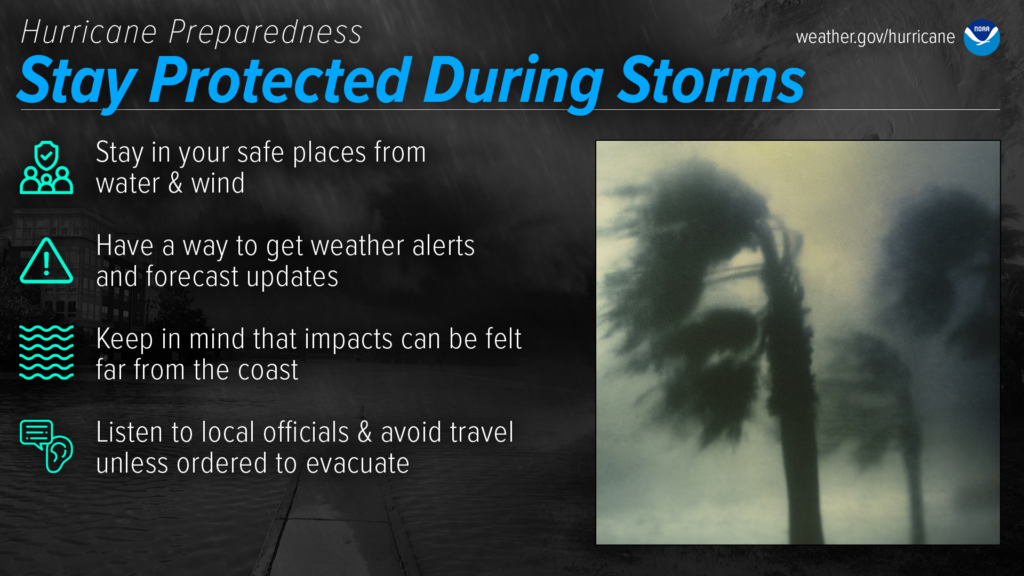
Be Patient
Hurricanes can take a long time to clear out and the aftermath can take even longer. So be patient and wait for the authorities to tell everyone “it is safe” to go outside.
Stay Calm
Of course, it is OKAY to be scared! But try to remain calm and assure everyone that it will be alright!
After the Hurricane
- Safety
- Always make sure you and your family are injury-free and provide first aid, if needed.
- DO NOT play in the flood waters. There may be dangerous bacteria, wildlife, hazardous chemicals, etc.
- DO NOT drink or prepare food using tap water until authorities let you know it has been tested and is safe.
- Contact Loved Ones
- Contact family and friends to make sure they are safe and to let them know that you are safe as well.
- Inspect your Home
- When it is safe, have an adult check for structural damages, gas leaks, and electrical hazards. If the area is not safe, then leave immediately!
- Help your community
- Check on people in your community, such as the elderly. BUT.. remember it is still dangerous outside. Don’t leave your neighborhood, if it is difficult to get to a neighbor, call the authorities and they will help.
- DO NOT go beyond your skills and abilities. If you do not know how to do something then wait for the professionals.
Hurricane Preparedness Video – NOAA
Expanding your knowledge and preparedness are important tools for staying safe during these natural disasters. Remember after a hurricane, it will take time to “return to normal.” So, keep learning, keep safe, and remember that we are all in this together.
